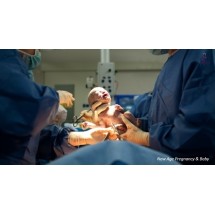
If you’re expecting more than one bun in the oven, one question that is bound to cross your mind early on is whether or not the labour process will be the same as if you were expecting just one. The answer to your question: Yes and No.
In some ways, it’s basically the same labour process you are going through, whether you are expecting one or more babies. You will still face contractions, there will still be that urge to push, and you may or may not require pain relief like epidural or laughing gas. You may be surprised to know that labour contractions will not be more painful, and no, you don’t need to go through labour twice or more, but you will need to push out two or more babies – one after the other.
However, there are definitely differences between the labour and delivery experiences of women with multiple babies versus those having just one. Let’s look at some of the common ones, if you are aiming for a vaginal delivery.
Firstly, the location in which you go through labour may be radically different from where you would have given birth had you had a single baby. You won’t have the luxury of giving birth at home or even in the normal labour ward. You will most likely have to give birth in the hospital’s operating room due to the high risks of labour complications that multiple births involve.
During a single birth, probably only your gynae or a nurse, and your spouse, as well as the anesthetist (for a limited time only) will be in your room. But with a multiple birth, there will likely be a lot more people with you in you delivery room, so that there are more ‘hands on deck’ to help care for the little ones once they are born. You may have up to two gynaecologists and a few nurses on hand for the delivery. You will also need to have an anaesthetist present, should you require an emergency caesarean section (C-section). Your partner will also be in the room, along with a paediatrician.
Your gynaecologist will probably recommend that you take epidural, if you are expecting twins or triplets. While the choice is still yours, an epidural will enable you to transit much more easily and quickly to a caesarean delivery should any of your babies be in distress during the labour process. Using epidural also relieves you from the worry of having to endure the pain for a longer labour period.
Do note that twins and triplets are more likely to be born pre-term – typically before 38 weeks – which is why the risk of complications is extra high. All your babies will be closely monitored electronically from the time labour begins. While a vaginal delivery for both or more of your babies is possible, it’s often the case that only your first baby is in the correct head down position. If at least one baby if in a breech or transverse (sideways) position, a C-section will be necessary.
Some conditions also mean you will need a caesarean section, for example if you have placenta praevia (a low-lying placenta) or if your twins share a placenta (monochorionic). During the labour itself, you may be asked to do an emergency C-section if any of the babies become distressed, the umbilical cord prolapses (falls into the birth canal ahead of the baby), your blood pressure goes too high, or the labour is progressing too slowly.
This is why many gynaecologists and hospitals would advise you to just opt for a scheduled C-section right from the beginning. About 50% of multiple births require a C-section.
In the end, however, whether your babies are delivered naturally or by operation, what matters most is that they are delivered safely, healthily and happily. So trust your gynaecologist’s advice, read up to prepare yourselves, and look forward to holding your little bundles in your arms very, very soon.
By Dorothea Chow






